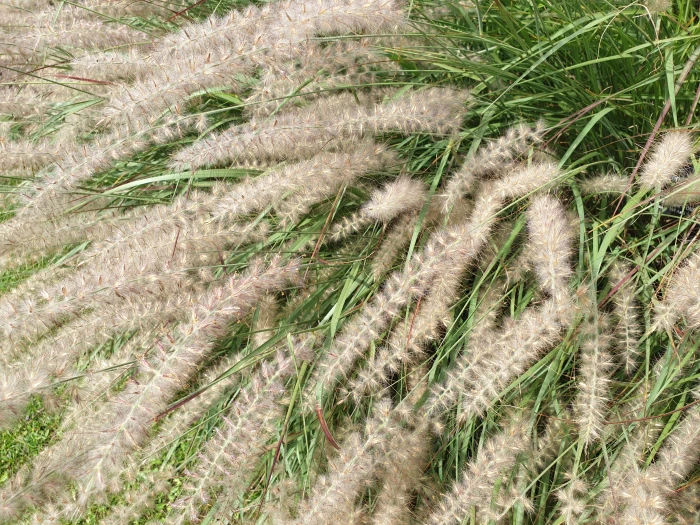Oriental Fountain Grass
(Pennisetum orientale)
Oriental Fountain Grass (Pennisetum orientale)
/
/

Emőke Dénes
CC BY-SA 4.0
Image By:
Emőke Dénes
Recorded By:
Copyright:
CC BY-SA 4.0
Copyright Notice:
Photo by: Emőke Dénes | License Type: CC BY-SA 4.0 | License URL: https://creativecommons.org/licenses/by-sa/4.0 | Uploader: DenesFeri | Publisher: Wikimedia Commons | Title: Poales_-_Pennisetum_orientale_-_2.jpg | Notes: Uploaded own work with UploadWizard |
























Estimated Native Range
Climate Requirements for Metairie, Louisiana
| This Plant | Your Site | Plant Suitability for Your Location | ||
|---|---|---|---|---|
| • Precipitation | 0" - 92" | 63" | Aquatic | Aquatic |
| • High Temp. | 45°F - 113°F | 92°F | Your summer temperatures are normal for this plant. | Excellent |
| • Low Temp. | -18°F - 65°F | 42°F | Your winter temperatures are normal for this plant | Excellent |
This plant may not grow well at your location - your precipitation is too high.
Summary
Pennisetum orientale, commonly known as Oriental Fountain Grass, is a perennial herbaceous plant native to open grasslands and steppes in Western and Central Asia. It typically grows to 60 cm (24 in) tall and broad, forming dense clumps. The plant features narrow, arching leaves and produces showy, tufted panicles up to 14 cm (5.5 in) long that are pale pink in color, maturing to a soft brown. These panicles appear in mid to late summer and can add a delicate, feathery texture to the garden landscape. Oriental Fountain Grass is semi-hardy and may struggle with prolonged freezing temperatures.
Oriental Fountain Grass is valued for its graceful form and the soft, brush-like appearance of its flower panicles. It is often used in ornamental gardens, borders, and as a specimen plant. While it prefers a sunny or partially shaded location, it is adaptable to a range of soil types, provided they offer medium drainage. To ensure its survival through colder winters, a sheltered position and winter protection, such as mulching, are recommended. This species has been recognized with the Royal Horticultural Society’s Award of Garden Merit, indicating its excellence for garden use. Care should be taken in some regions as it can self-seed and become invasive.CC BY-SA 4.0
Oriental Fountain Grass is valued for its graceful form and the soft, brush-like appearance of its flower panicles. It is often used in ornamental gardens, borders, and as a specimen plant. While it prefers a sunny or partially shaded location, it is adaptable to a range of soil types, provided they offer medium drainage. To ensure its survival through colder winters, a sheltered position and winter protection, such as mulching, are recommended. This species has been recognized with the Royal Horticultural Society’s Award of Garden Merit, indicating its excellence for garden use. Care should be taken in some regions as it can self-seed and become invasive.CC BY-SA 4.0
Plant Description
- Plant Type: Grass
- Height: 2-3 feet
- Width: 2-3 feet
- Growth Rate: Moderate
- Flower Color: N/A
- Flowering Season: Summer, Fall
- Leaf Retention: Deciduous
Growth Requirements
- Sun: Full Sun, Part Shade
- Water: Medium
- Drainage: Medium
Common Uses
Bird Garden, Border Plant, Deer Resistant, Drought Tolerant, Groundcover, Low Maintenance, Potted Plant, Rabbit Resistant, Street Planting
Natural Habitat
Open grasslands and steppes in Western and Central Asia
Other Names
Common Names: Oriental Pennisetum
Scientific Names: Pennisetum orientale , Cenchrus orientalis , Cenchrus orientalis subsp. triflorum , Pennisetum fasciculatum , Pennisetum orientale var. triflorum , Pennisetum sinaicum , Pennisetum setaceum subsp. orientale , Pennisetum setaceum var. orientale , Pennisetum orientale var. fasciculatum , Pennisetum persicum
GBIF Accepted Name: Cenchrus orientalis (Rich.) Morrone